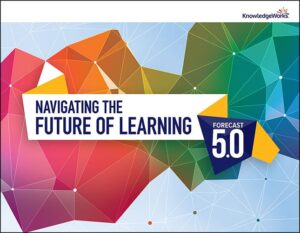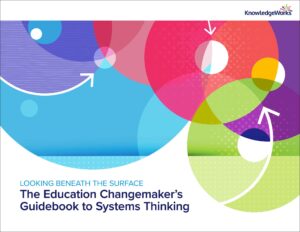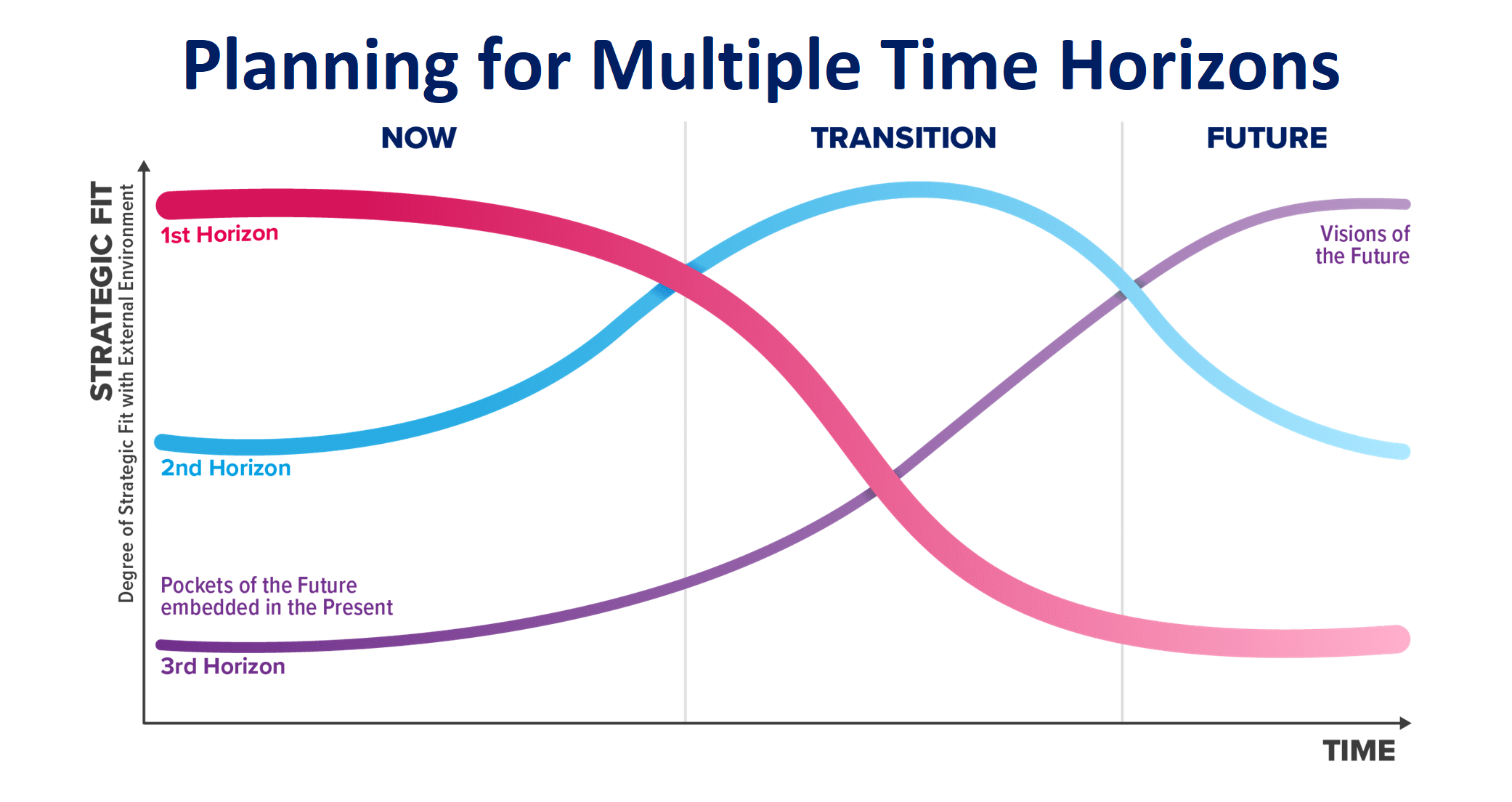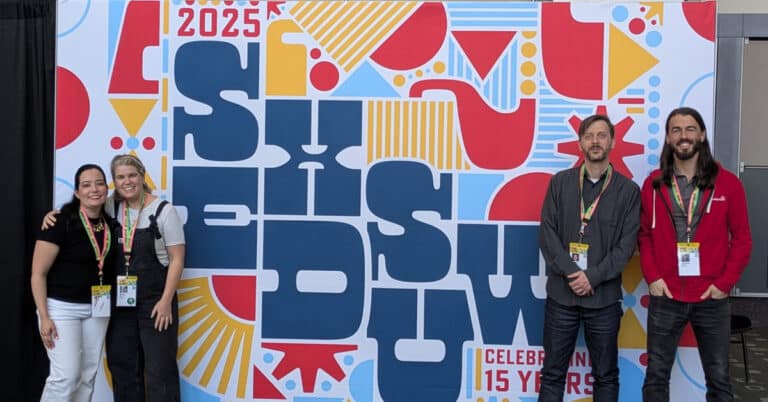Even as we navigate the COVID-19 pandemic, we are also living through an era shift. Driven by exponential advances in digital technologies and characterized by significant social, economic, environmental and political shifts, this era shift is requiring us to reconsider many aspects of how we live, work and learn. Digital, hybrid and socially distant, in-person learning put specific form to the idea that established approaches to teaching and learning might need to change for a while or long term. Students’ experiences of pandemic education and our own responses to the ways systems have adapted underscore the importance of being clear about what we want for the future of learning.

To explore this era shift further, download KnowledgeWorks’ Navigating the Future of Learning forecast.
Download Now >
Recently, I had the chance to keynote during Connect 2020: The NACEP Digital Forum about the changes contributing to this era shift and education’s increasingly crucial role in supporting the healthy development of young people, effective lifelong learning and community vitality.
Leading the way to the future requires coalescing around shared visions that are informed by an understanding of emerging changes and future possibilities. We can harness inbound change – the kind of change that happens to us – to shape the future of learning through the visions that we pursue and the actions that we take. Those visions and actions constitute outbound change, or the kind of change that we initiate, and which reflects our values.
Forces shaping learning
The drivers of change from KnowledgeWorks’ Navigating the Future of Learning forecast describe current inbound changes that promise to shape education over the next decade. When I asked participants to indicate which driver of change seemed most relevant to their current role or program, their choices stacked up as follows:
To highlight their top three drivers of change:
- Toxic Narratives invites us to revisit definitions of success while preserving high expectations for student learning
- Automating Choices exhorts us to find ethical ways of using increasingly smart technologies in education – and knowing when and how not to use them
- Civic Superpowers encourages us help learners of all ages and backgrounds use their voices and to explore ways of sharing power and broadening the frameworks that we use to gauge the education outcomes.
Making sense of future possibilities
After I presented on these drivers of change, Dr. Kayla Westra, NACEP’s board president and dean of curriculum and instruction at Southeast Technical College, and I chatted about a range of topics and planning considerations related to these changes and to ways of making use of insights about the future in one’s context.
First and foremost, it is always difficult to look up from the press of the day-to-day and consider future possibilities. In this turbulent and uncertain time, it is especially difficult to do so. One thing that can be helpful is to compare our stated and enacted visions, checking whether the actions that we are taking align with what we say we want for the future. Taking even a few moments to reflect on our visions can help us make sure that we continue to guide our learning communities and organizations in the desired directions. We can also use a systems thinking tool called the vision deployment matrix to compare our current reality with our desired future and to analyze the gaps between the two.

For more information on understanding our current systems and how to change them, see The Education Changemaker’s Guidebook to Systems Thinking.
Read More >
Even a relatively short exploration of future possibilities and their implications can help groups get clearer about what they want to bring about and what they want to avoid. Identifying desirable and undesirable attributes of the future of learning can help people working in different organizations remember what the broader team wants the future to look, feel and sound like. That rich picture of the shared vision, or preferred future, can help guide individual action toward a common end.
Recognizing that K-12 and postsecondary education administrators rarely receive formal training in strategic planning and futures thinking and that systems’ and institutions’ capacity in these areas tends to be low, groups can approach strategic inquiry and strategy development as an organizational learning journey. Working within some agreed parameters, individuals could take responsibility for learning about specific tools or approaches and guiding colleagues through the process of applying them. This collective exploration could develop capacity for strategic thinking and improve groups’ ability to identify near-, mid- and long-term strategies and actions. Planning for multiple time horizons can make the often-daunting task of responding to the changing landscape relatively approachable, as illustrated below.
We can inform such planning by considering how past, present and future forces can help us move toward – or hold us back from – our visions. Positioning the drivers of change that are pulling us toward the future (the inbound change described above) alongside current and historical factors can help us make informed plans for pursuing our visions and for refining our plans for various time horizons. A strategic foresight tool called the Futures Triangle supports people in weighing these factors.
Choosing our ways forward
These are just some of many tools and processes for applying futures thinking to education programs. While we are holding many of our longstanding assumptions about education loosely in response to the press of COIVD-19, we have the opportunity to reimagine education instead of returning to what used to be normal. Time is limited, but leaders at all levels of education systems and institutions can lead the charge of co-creating the future alongside parents, families and communities.
Even when we are not intentional about it, our actions shape the future of learning. We would do well to make deliberate choices about what we want it to look like.
Explore the futures thinking tools in the Futures Thinking Now series and begin your journey of change.







